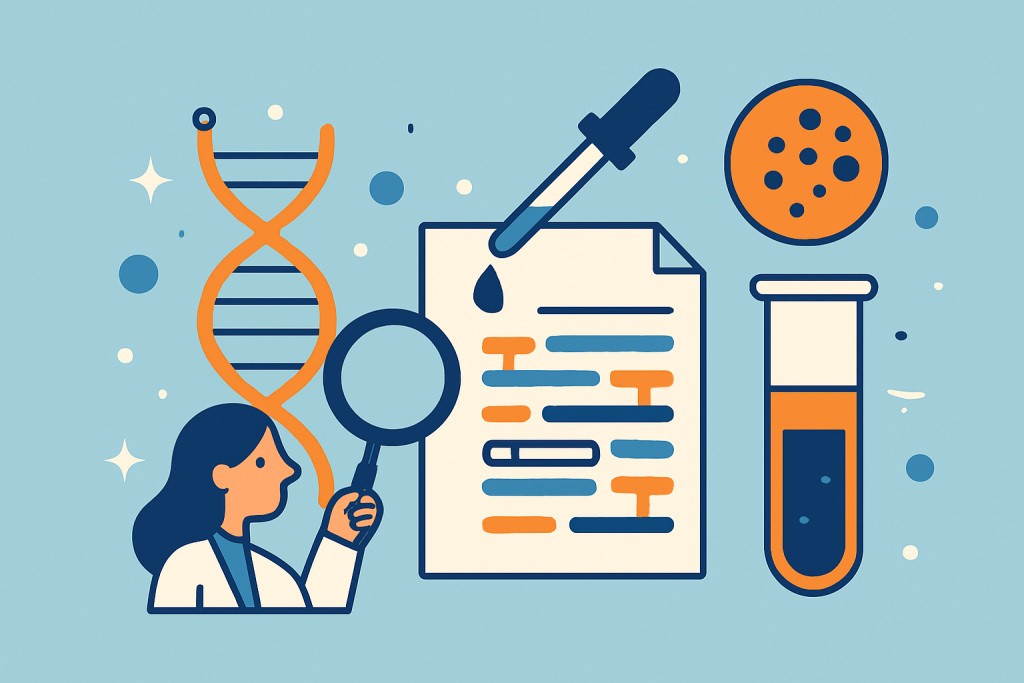If you’ve ever wished science could custom-tailor health solutions the way a good tailor makes a suit, gene synthesis might be the breakthrough you’ve been waiting for. At its simplest, gene synthesis is the process of designing and constructing DNA in the lab. Instead of waiting for nature to provide the genetic material needed for study or treatment, scientists can build it themselves. From personalized medicine to the food you eat, gene synthesis is already shaping the world around us. Let’s break it down into six areas where it matters most.
Gene Synthesis and Personalized Medicine
For years, healthcare has operated on broad averages. Doctors prescribed treatments that worked for “most” people, and if you were one of the outliers, you had to adjust. Gene synthesis is changing that equation. By constructing DNA sequences that mirror your unique genetic makeup, researchers can design therapies that fit you specifically. This is the heart of personalized medicine, where treatments are guided by your DNA rather than general statistics.
Take cancer as an example. Tumors often carry mutations that differ from patient to patient. Instead of using a one-size-fits-all drug, scientists can now study the genetic quirks of a particular tumor by synthesizing the relevant DNA sequences. This helps doctors identify therapies that target the tumor’s actual weak spots.
How Research and Healthcare Depend on Synthetic DNA
Behind every breakthrough in medicine is a mountain of research, and gene synthesis is helping climb it faster. Scientists don’t need to wait for rare DNA samples to show up in their labs anymore. They can order or create the exact sequences they need, saving time and opening up possibilities that once felt impossible.
DNA synthesis companies create and develop custom DNA samples for experiments in healthcare and biological research. This isn’t just about convenience. It’s about accelerating discovery by removing bottlenecks. Imagine a team investigating how bacteria become resistant to antibiotics. Instead of waiting for nature to supply resistant strains, they can synthesize the resistance genes and begin testing how to fight them. That speed translates into earlier insights, better experiments, and ultimately faster development of treatments. For healthcare, it means a smoother path from lab bench to patient bedside.
Synthetic Biology and New Industries
Gene synthesis isn’t limited to medicine. It’s also the foundation of synthetic biology, where scientists design organisms with entirely new capabilities. This field is producing yeast that generate valuable compounds, bacteria that clean up environmental pollutants, and crops that survive harsh climates. What all of these projects share is the ability to write DNA that tells cells to do jobs they couldn’t do naturally.
For industries, the implications are huge. Instead of relying on fragile ecosystems or costly raw materials, companies can use engineered organisms to make what they need. Think of insulin, which once required harvesting from animals but is now produced efficiently by genetically engineered bacteria. The same logic applies to biofuels, plastics, and even food production. By starting with synthetic DNA, scientists can build organisms designed for sustainability and efficiency, offering new answers to old problems.
Precision Diagnostics and Early Detection
One of the most promising applications of gene synthesis lies in diagnostics. By creating synthetic DNA sequences that mimic disease markers, scientists can test whether new diagnostic tools are accurate before using them on patients. This speeds up the process of developing tests and ensures they’re reliable.
Picture a blood test designed to detect cancers before symptoms appear. To make sure it works, researchers need access to the genetic markers linked to those cancers. With gene synthesis, they can build those markers in the lab instead of waiting for patient samples. This makes it possible to refine diagnostics more quickly and thoroughly. The result is earlier detection, which can be the difference between a more manageable condition and a life-threatening one. For everyday people, it means healthcare that catches problems before they escalate, shifting medicine from reactive to proactive.
Balancing Innovation With Responsibility
Any technology powerful enough to rewrite DNA also raises important questions. Who decides how far gene writing should go? How do we prevent mistakes or misuse? These are ethical and practical issues that scientists, policymakers, and the public are all weighing carefully.
Regulations and safety protocols are being built into the research process, from international agreements to lab-level safeguards. For example, access to certain genetic sequences is restricted to prevent them from being misused. At the same time, researchers are working on “safety switches” in engineered organisms so they can’t survive outside controlled environments. While the possibilities are exciting, the conversation around ethics ensures progress doesn’t outpace responsibility. For readers and enthusiasts, this is a reminder that science isn’t just about what we can do, but also about how we choose to use it.

